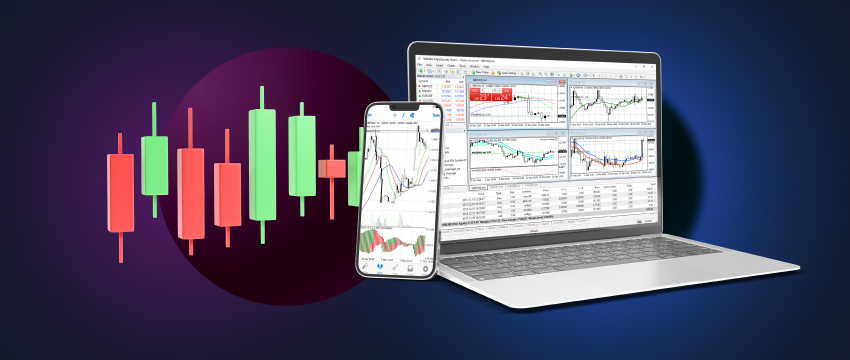Swing trading is a trading style that suits those looking for something in the medium-term. It is a good fit for forex traders who want to trade. Additionally, it allows them to make gains from price swings.
It is somewhere between day trading and position trading. Day trading is a short-term investing style, while position trading is a long-term style. Swing investing combines the traits of both. It also requires the skills of day traders and position traders.
Therefore, swing trading demands a trader who is patient. However, it also requires someone who is diligent and organised. A swing investor would identify a possible trend and then hold the trade(s) for days or weeks.

Is this a trading style that suits all traders?
Swing trading is not for everyone. It depends on the time you can invest in researching, trading, and monitoring the forex markets. This strategy does not require an investor to check the charts every few minutes. However, it will require them to commit to a couple of hours. This time is necessary for analysing the market.
Traders who work full-time may find swing trading more suitable. Similarly, those whose days are quite hectic might also prefer it. This is because swing investing requires only a small amount of time. Traders only need to focus on staying up to date with financial news and market events.
Swing traders use strategies that combine fundamental or テクニカル分析 or wholly rely on technical analysis and indicators to determine whether or not a forex pair will rise or weaken in the near future.
Technical analysis and indicators are important for swing traders looking for price patterns and support and resistance levels.
Swing traders tend to be individual traders as institutional investors with large portfolios cannot easily move in and out of positions.
How does swing trading work?
By identifying “swings” within a medium-term trend, a swing investor can enter at the right moments. They only enter when there seems to be a high probability of winning.
Specifically, the investor would buy at swing lows. Then, they would sell at swing highs. This trading strategy takes advantage of brief countertrends.
Managing risk from price fluctuations
Traders may see trades go against them during the holding period. This is because there can be price volatility in shorter time frames.
Since trades last longer than one day, traders need to be prepared. They would need a strong risk management plan in place.
Additionally, they should use larger stop losses to manage volatility. Based on this, forex traders must adapt this to their money management plan.
Tips when using the swing trading style
- Remain focused and calm, follow your plan and trust your analysis.
- Don’t worry about spreads so much, as these won’t impact your overall profits since your trades will have larger targets.
- Since spreads are not so much a concern, you can also trade forex pairs with bigger spreads and lower liquidity.

Different swing trading strategies used by forex traders
Swing traders use four popular strategies: reversal, retracement (or pullback), breakouts, and breakdowns.
Reversal Trading
A shift in price momentum is necessary for reversal trading. A reversal is a shift in the price of an asset’s trend direction.
For instance, when the price begins to decline after an upward trend loses steam. A reversal may be bullish or bearish, or, in other words, positive or negative.
Retracement Trading
Traders search for a price that momentarily reverses within a broader trend. This strategy is known as retracement (or pullback) trading.
Later on, the price keeps moving in the same direction after momentarily retracing to an earlier price point. It can be challenging to anticipate reversals and distinguish them from temporary setbacks.
A pullback is a shorter-term “mini reversal” within an existing trend, whereas a reversal indicates a change in trend. Consider a pullback or retracement as a “minor countertrend within the major trend.”
Price movement against the main trend should be brief and temporary if it is a retracement. Potential pullbacks are always the beginning of reversals. Determining whether this is merely a pullback or a true trend reversal is difficult.
Breakout Trading
Traders take a position on the early side of an uptrend and wait for the price to “breakout.” They call this breakout trading. As soon as the price breaks a critical level of resistance, you enter a position.
The reverse of a breakout strategy is a breakdown strategy. You buy on the early side of a downward trend and wait for the price to “breakdown,” also referred to as a downside breakout. As soon as the price breaks a critical support level, you enter a position.
Is swing trading for me?
Swing trading may be for you when you don’t mind:
- Holding your trades for several days.
- You are patient and calm even when the market moves against you.
- You are willing to make smaller transactions, but these should be carefully planned and are good setups.
- Large stop losses are ok.
Swing trading is not for you when:
- You enjoy the thrill of fast-paced trading.
- You are impatient.
- You get stressed when trades go against you.
- You don’t have the time to analyse the market for a few hours, or you enjoy analysing the market too often throughout the day.
Not every trading style suits swing trading, and it isn’t the right fit for all traders. It is best suited to those who are occupied throughout the day, but also enjoy investing on the side, for a few hours a day.
Always remember that not all investing styles are the same or suit everyone, and each of them has its advantages と disadvantages.
What suits one investor doesn’t necessarily suit all traders, and there are many factors to consider before you choose which one.
From time investment to the level of knowledge required, skills and capital, these are a few considerations that need to be accounted for before you get started.

T4Trade: Exploring the markets with a regulated broker
If you are a trader, you understand the value of having a comprehensive trading education as well as the appropriate tools and resources to keep you on course and advance your knowledge and abilities.
Learn at your own pace with tailored instruction for all skill levels
T4Trade offers customised instruction to traders of all skill levels and abilities, allowing them to advance and learn at their own pace.
Traders can concentrate on their strategy and take advantage of excellent trading conditions with a regulated and reliable forex broker thanks to fast execution, flexible leverage, and quick and free withdrawals and deposits.
Additionally, if you have any questions, our friendly support team is available to you 24/7 via phone, email, or live chat.
Furthermore, T4Trade gives you access to special tools that will help you develop your skills and become a proficient trader by providing insightful commentary from our webinar presenters, podcasters, and professional traders.
Our expert analysts can provide feedback and analysis via free webinars, and in-depth articles, which you can peruse whenever you have time. Additionally, there is an economic calendar to track financial indicators and activities.
All online traders can access these resources through T4Trade Education.
On T4Trade’s Blog, you can also explore more information on swing trading and other forms of investing by reading our dedicated articles.
If you would like to learn more about swing trading or require further information on other trading styles, please do not hesitate to reach out to us and we will provide the necessary support.
Disclaimer: This material is for general informational and educational purposes only and should not be considered investment advice or an investment recommendation. T4Trade is not responsible for any data provided by third parties referenced or hyperlinked in this communication.




